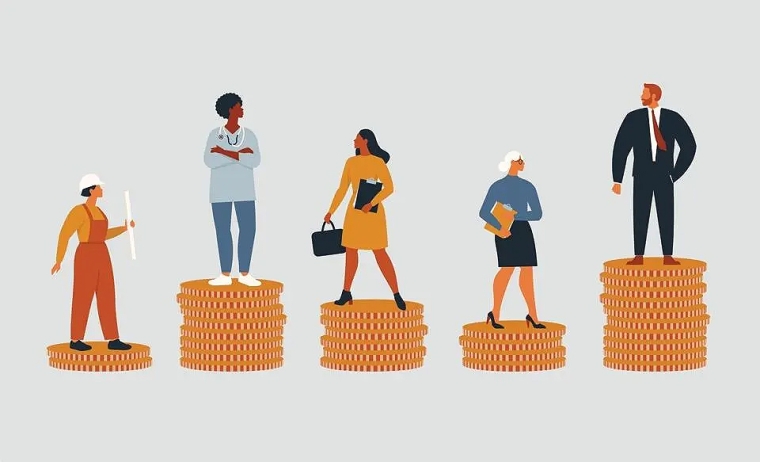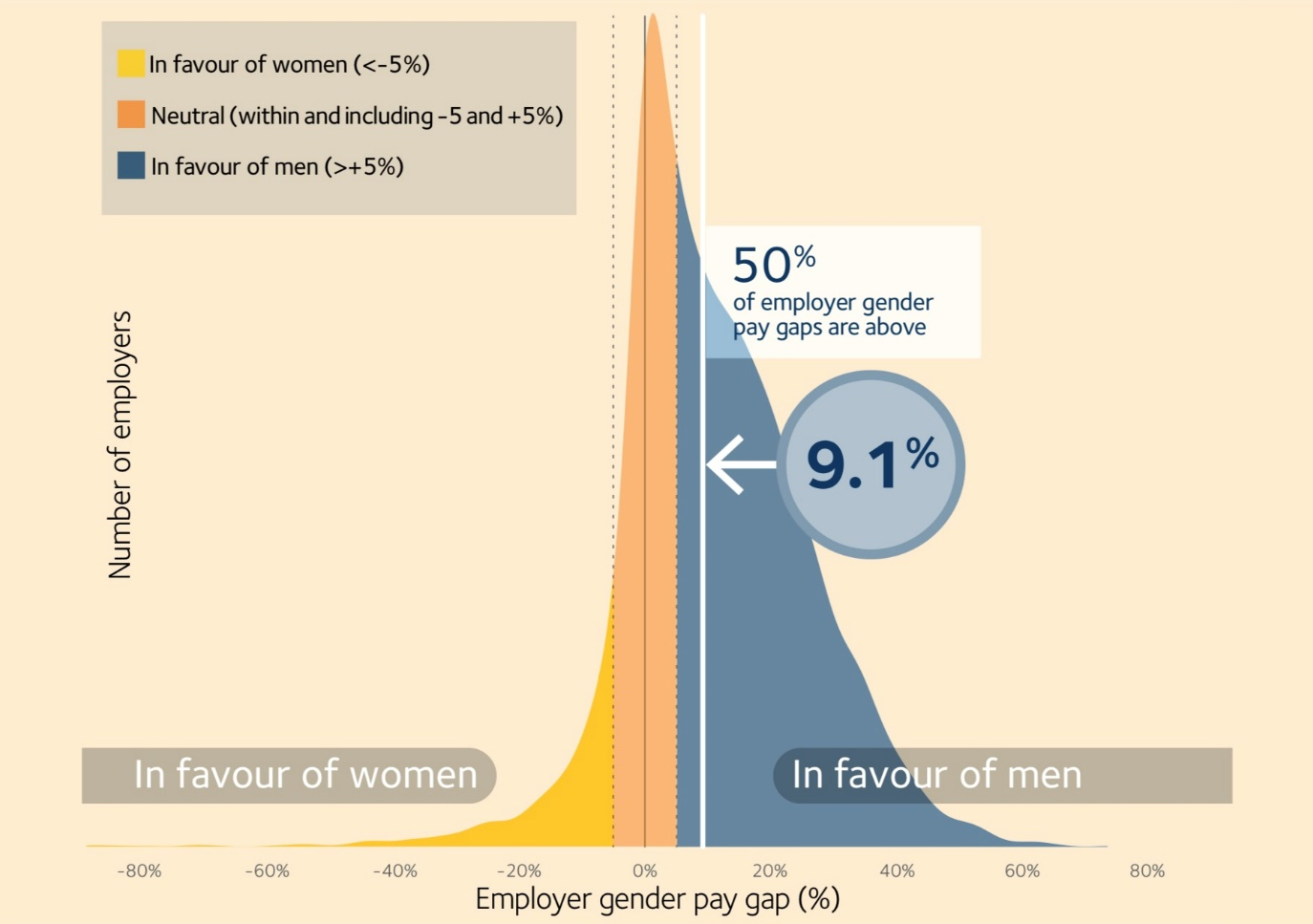
Spare a thought for the CEOs of today’s large companies. Long gone are the days when they were judged solely on financial performance. Recent years have seen the emergence of a raft of new performance measures like greenhouse gas emissions, energy efficiency, cybersecurity protection, and of course the promotion of diversity, equity, and inclusion.
Some have been imposed by market forces, others by government regulation.
The latest government imposition to hit the headlines in Australia is gender pay gap reporting. The Workplace Gender Equality Agency (WGEA) has just published gender pay gap data on nearly 5,000 employers with 100 or more employees.
The Minister for Women, Katy Gallagher, describes this collection and release of data as ‘a historic step towards transparency and accountability in addressing gender inequality’, a problem the government says costs the Australian economy $51.8 billion a year. The Minister’s conclusion –
By shining a light on gender pay gaps at an employer level, we are arming individuals and organisations with the evidence they need to take meaningful action to accelerate closing the gender pay gap in Australian workplaces.
No doubt, part of the thinking is that being ‘named and shamed’ will encourage behavioural change from employers with large gender pay gaps.
How is the gender pay gap measured in the data published by the WGEA? It’s the difference between the median earnings for men and women expressed as a percentage of men’s median earnings. Part-time and casual earnings are converted to full-time equivalents.
Crucially, the gender pay gap is a different concept to equal pay. The latter refers to the situation where men and women are paid the same for doing the same job. That’s been a legal requirement in Australia since 1969.
What are the results revealed by the WGEA?
The headline statistic is that the median total remuneration (including bonuses, overtime, and sales incentives) gender pay gap is 19%, in favour of men. That derives from median total remuneration of $96,945 for men and $78,484 for women, an annual gap of $18,461.
Only 30% of employers have a gender pay gap in the WGEA’s target range of +/- 5%. A significant 62% of employers have a gender pay gap in favour of men of more than 5%.
Distribution of employer median gender pay gaps

Source: Workplace Gender Equality Agency
The Australian media have had a field day identifying the industries and companies with the highest gender pay gaps. Perhaps unsurprisingly, mining and finance are among the perceived gender dinosaurs. In both industries more than 90% of employers have a gender pay gap that favours men.
The Big-4 Australian banks have gone out of their way in recent years to promote an image of socially responsible corporate citizens. The latest results won’t help their cause. According to the WGEA’s Data Explorer, Australia’s largest bank, the Commonwealth Bank, has a gender pay gap of 29.9%. That’s followed by 28.5% for Westpac, 23.1% for ANZ, and 18.8% for NAB.
These figures likely reflect a preponderance of senior men in the highest paid banking jobs and many women working in lower paid branch jobs.
Among Australia’s big miners BHP has a gender pay gap of 20.3% and Rio Tinto 13.5%.
The nation’s two biggest supermarkets have received a great deal of bad press over the last year amid accusations of price gouging during a cost-of-living crisis. However, they’ve found partial redemption in the gender pay gap stakes – Coles at 5.6% and Woolworths at 5.7%.
The Australian Financial Review examined the gender pay gaps of all the companies in the ASX200. The ‘winner’ or ‘loser’, depending how you look at it, was NZ’s A2 Milk with a remarkable gender pay gap of 40.5%.
There’s been criticism of the WGEA’s methodology from some quarters on the grounds that it produces much higher pay gaps than the analysis undertaken by the Australian Bureau of Statistics.
There’s also been push back from groups seeking to justify their male-favouring gender pay gaps. Some in the tech sector insist a chronic shortage of female software engineers, rather than hiring and compensation practices, is the primary cause. In other words, they’d like to close the pay gap, but the qualified female staff simply aren’t available.
The arguments of others revolve around the belief that women choose to play a leading role in family care which makes it more difficult for them to do overtime and longer hours or to participate in weekly fly in/fly out operations in the mining sector.
But in the current environment it would be brave, or foolish, for a CEO to spend too much time trying to defend a high gender pay gap.
Going forward, examining the WGEA’s annual gender pay gap figures will become a regular feature of the financial calendar. Rightly or wrongly, there will be PR trouble for companies that don’t reduce their gender pay gap or worse, see it rise.
Large kiwi companies and politicians will be following this latest development in Australia with interest. Last August, in its final days in office, NZ’s Labour government announced plans to introduce mandatory gender pay gap reporting for private and public companies with more than 250 employees. However, Labour was out of government before anything was drafted.
The National Council of Women of New Zealand surveyed the country’s political parties at the time. Pay gap reporting was supported by Labour and the Greens but opposed by ACT. National didn’t express a view.
While the Coalition will no doubt ‘talk the talk’ on gender pay equality, it may not wish to risk irritating parts of the business sector with a reporting regime so early in its term. Everyone wants transparency but not if it comes at a political cost.
*Ross Stitt is a freelance writer with a PhD in political science. He is a New Zealander based in Sydney. His articles are part of our 'Understanding Australia' series.
19 Comments
"Everyone wants transparency but not if it comes at a political cost. "
Which is why everyone ignores the fact that gender pay gap policies are an attempt to justify legislating an aggregate population outcome to individuals life choices.
These studies are always reported in generalisations. I've never seen a case study showing men are paid more than women for the same role, working the same hours.
Why no ethnic pay analysis? White women have superior financial and health outcomes than just about any other demographic on the planet.
What are the Māori, Pasifika, Aboriginal pay gaps?? I can only assume that doesn’t suit the agenda.
Even worse than that, why are corporates not picking up on this clear ethnic/gender pay gap and hiring Maori/Pasifika/Aboriginal people to save themselves 10% or so on the salary bill?
You’re assuming they are paid less, we don’t know because they can’t be bothered measuring and reporting it. We have had several female bank CEO’s but no Māori or Pasifika, crickets.
Maybe they haven't found any Maori or Pasifika candidates suitable to be a bank CEO?
Has nothing to do with the selection/hiring process I would have thought, and everything to do with hiring the best person for the role.
Congratulations, you just explained the gender pay gap.
Great. So either gender pay gap exists due to inherent skills, thus a lack of a certain genders being suitable for a role. Or the gender pay gap exists because companies are too busy paying men more to do a task than women can just as easily do.
I sure hope NACT never mention the gender pay gap, it would be highly hypocritical given their stance on race relations.
Ethnic pay analysis reveals female muslim immigrants from India are the top of the ladder in the USA but having lived in Tower Hamlets Bengali I'm confident the Bengali women in the UK are near the bottom.
The interesting pay gap would be between women who have had children and those who haven't. How do single women compare with single men of the same age in the same non-physical work?
On one side of the coin it encourages workplaces to clamp down of unfair gender biases that lead to unfair outcomes, on the other side, it removes the incentive for an employee to go out of their way to create value for their company, if your colleagues are destined to get paid the same as you to meet arbitrary gender/ethnic grouping, and your promotion to the next rank is defined by how many people of your gender or ethnicity are already in the role your being promoted into, then why go over and above to create value?
The only good this will do is force talent in large corporations being discriminated upon based on their race or gender to leave for other smaller companies/start their own, that don’t judge them on anything but their contribution.
Is almost an anti-monopoly law then than a “fairness” one.
I have personal knowledge of multinational mandated deliberate gender disadvantage in developing job candidate shortlists around 10 years ago.
By arbritarily increasing the ratio of eligible female candidates (irrespective of other abilities) so as to allow the company & marketing to promote their improving gender equality in their ESG & product advertising.
If proven in a PG, it would have been a breach of the law in Australasia at the time. The local division was advised this however chose to take their chances under corporate pressure.
“While historically that earnings difference between men and women could be blamed on educational choices made at a young age and career choices, Goldin found that the current earnings gap was now largely due to the impact of having children.”
https://www.rnz.co.nz/news/world/499807/nobel-economics-prize-awarded-t…
Having children is a choice (& NZ has paid parental leave), who has primary responsibility for childcare is also a couples decision.
Totally agree - maybe there should be a campaign for men to take time out to look after kids for the same time to ‘level the field’.
Part-time and casual earnings are converted to full-time equivalents.
interesting. I wonder if those working significantly longer than typical full time hours are also converted to full time equivalents , that is, significantly reduced.
I doubt it as it is counter the accepted narrative
Equal pay for equal work is the objective and should be audited. Gender pay gap, in aggregate, is maybe one of the least valuable stats of the low value DEI sphere. If we want the right outcomes, the system need intelligent design. This is not it.
My understanding is that gender pay gap study does not allow for hours worked, a rather important variable you would think. Certainly not a rigorous exercise as you highlight.
If two people with the same skillset and experience, one man and one woman, both get offered a job and one negotiates harder than the other to achieve a greater salary, the questions you should be asking are:
1./ Was it unconscious bias that somehow lead to one getting a greater salary, and is there a way to confirm this confidently?
2./ Is it fair and equitable to automatically give the lower paid worker of the two more salary to even the playing field simply on the basis that there is a so called gender pay gap?
3./ What then is the point of a meritocracy and the art of negotiation if everything becomes standardised should we continue t=down this path to further extremes?
My personal experience would suggest that not everyone values themselves enough and is willing to negotiate when offered a role, or is not willing to stand firm and walk away if their values are not accurately represented by their contracts with a potential employer. A 2-minute conversation of a couple of emails with a potential employer can be worth a lot.

We welcome your comments below. If you are not already registered, please register to comment
Remember we welcome robust, respectful and insightful debate. We don't welcome abusive or defamatory comments and will de-register those repeatedly making such comments. Our current comment policy is here.